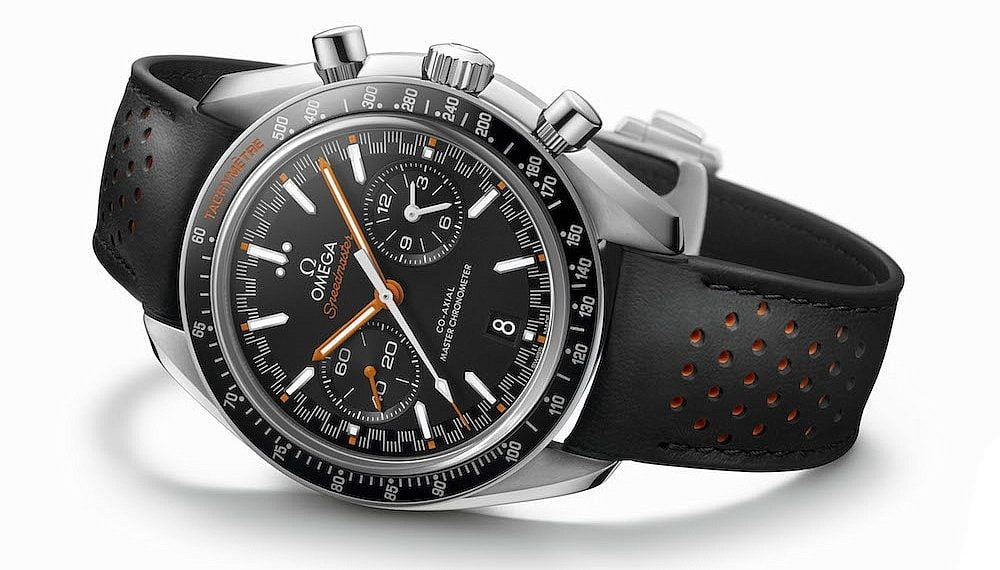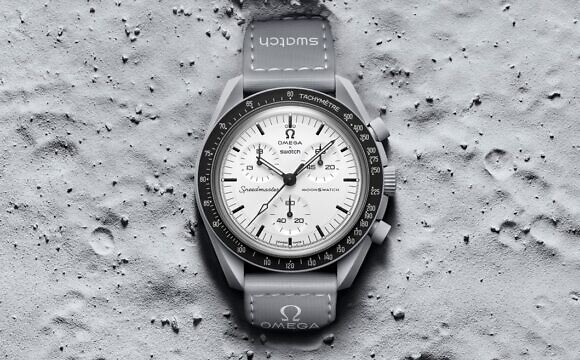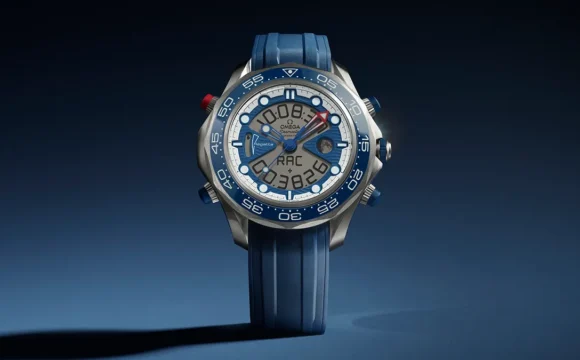out of this world
It could almost be said that BaselWorld, in its 100th edition, was merely the appetiser to the course of celebrations for the Omega Speedmaster, the first and still the only watch to have made it to the moon. The main course in commemorating 60 years of the Speedmaster was reserved for the Tate Modern on London’s Bankside a month later, when a team of astronauts descended upon London in full space regalia as a precursor to the grand event.
At the gala evening, held in a cavernous light fantasia within the Tate Modern, Omega welcomed Buzz Aldrin, the astronaut who – together with compatriot Neil Armstrong – became the first humans to ever set foot on the moon. Aldrin, 87, maintained his trademark wit when he was asked how it feels like to still be celebrating the lunar landing, quipping, “What is the alternative?"

Indeed, Omega’s longtime ambassador and collaborator George Clooney, who was in attendance, said that the moon landings was hugely significant in the course of his own life, as it mattered to a great deal of people he was connected to. “I remember how – as an eight year old, I was able to stay home from school to watch the moon landing on television with my family," Clooney recalls. A young Clooney would go on to memorise all of the astronauts’ names, eat the food that they ate and once, during a family vacation, drove through Neil Armstrong’s hometown, simply because the astronauts meant so much to him.
The young Clooney also made his own Speedmaster out of paper before his father gave him an actual Omega timepiece much later on, for his graduation. Onstage, Clooney thanked Aldrin for showing, ‘the remarkable courage and leadership in his mission which were a big deal to us."

That Omega became indelibly linked to being a watch for space, was almost entirely accidental. Back in 1957, the very first Omega Speedmaster was created with the idea of racing cars in mind. In its early advertisement brochure for the North American market, it referenced a virtual race from Quebec to Montreal in which the co-driver could measure the average speed of travel accurately using its tachymeter scale. Its robust construction was meant to ride the chocks and vibrations from the road, all the while maintaining its timekeeping precision.
In the fall of 1962, a couple of aircraft pilots or ‘Jet Jockeys’ as they were called by the National American Space Agency (NASA) were signed up on space missions. Wally Schirra and Gordon Cooper casually picked out a couple of Omega Speedmasters from the Houston store as their timepiece to wear for their missions to outer space. This led to Schirra becoming the first astronaut to wear an Omega watch in space.

NASA, realising that they needed reliable timepieces for their astronauts, decided to issue a clarion call to watchmakers to provide standard issue timepieces. As Jim Ragan, NASA’s aerospace engineer for 36 years recalls, four watch brands responded to the specifications imposed by NASA for “a highly durable and accurate chronograph to be used by the Gemini and Apollo flight crews as an essential adjunct or as a backup for timing devices."
Ragan then set out a battery of tests – extreme temperatures, vibrations, hard shocks – to determine the space-worthiness of these timepieces. One was rejected immediately as it was, “way too huge." Two others fell by the wayside when they were found to have failed the thermal vacuum tests. Only the Omega Speedmaster passed and it soon became the standard issue for astronauts, fitted with a Velcro strap to wrap around the spacesuit of the astronauts.

“If you think about what this watch means to NASA, it was the device that would tell Neil and Buzz how much time they had on the moon’s surface before going back to the Eagle landing module if they ever lost communications with us," Ragan says. (Indeed, Neil had left his Omega inside the landing module as its electronic timer had malfunctioned). “The astronauts were asked to start the chronograph the moment they exited the landing module." For Aldrin, the timepiece represented an even closer connection, because “we would always know the time in Houston," despite being approximately 238,900 miles away from home.
During the ill-fated Apollo 13 mission, when the crew of three lost all of their electrical power, the only backup was the captain’s Omega Speedmaster. Ragan remembers how precarious the situation was, because the astronauts had to time three delicate firing bursts in a 14-second interval to achieve the perfect – and only – trajectory to re-enter the earth’s atmosphere. “Anything less and they would have been burned up by the atmosphere and anything more would have resulted in them passing by earth and being lost to space – the Omega saved their lives and it made every penny we spent in testing worth it."
For all of its past successes, Omega has been honoured with the rare privilege of being the single, sole provider of timepieces for NASA and also the European Space Agency till today. Omega’s current President Raynald Aeschlimann says that the story of the Omega Speedmaster is one of respect for its past successes and of innovating for the future. In this year’s commemorative editions for the Omega Speedmaster, Omega has created the 44.25mm Racing Master Chronometer, a distinct recall of the 1968 Omega Speedmaster. Orange, a colour which was first used in the vintage pieces for its easy readability, is the colour of the hands while the bevelled 18k white gold arrowhead indexes glow with white Super-LumiNova.
Among the new technologies present in the Racing Chronograph is the Master Chronometer certification. What this means is that the calibre 9900 and the watch have passed the industry-leading Swiss Federal Institute of Metrology (METAS) certification. This rigorous set of qualification imposed by METAS demands that the watch is resistant to magnetic fields of up to 1.5Tesla (15,000 Gauss), about 15 times more resistant than any other anti-magnetic references in current production. Its timekeeping accuracy is also tested across six different positions, alternating temperatures, varying levels of power reserve and exposure to water pressure, ensuring that its standard deviation is within a narrow band of zero and +5 seconds per day – never slower to ensure you don’t miss your flight or train.
Back at the gala dinner, Aldrin recounts his many exploits after the moon landing which was one of several high points in his life. “I’ve ridden with whale sharks and gone to the depths of the sea to view the wreckage of the Titanic." Late last year, a spry 86-year- old, Aldrin descended upon the South Pole and flirted with death as he made history becoming the oldest man to reach the South Pole.
As the sole surviving astronaut of the dozen to have walked on the moon, Aldrin remarks that his life has been based on the famous saying by John F Kennedy who ignited the race to land a man on the moon with his famous speech, “We choose to go to the moon in this decade and do the other things, not because they are easy, but because they are hard, because that goal will serve to organize and measure the best of our energies and skills, because that challenge is one that we are willing to accept, one we are unwilling to postpone, and one which we intend to win, and the others, too."
As for Aldrin, the future will include being at the 50th anniversary of the moon landing in 2019. In the meantime, he is busy with designing a virtual reality experience of cycling pathways on Mars and, thinking about the development of a dual time watch which would track the time on Earth and on Mars. On the latter, Aldrin flashed a wry smile and with a twinkle in his eye, says, “Omega will do it."
















